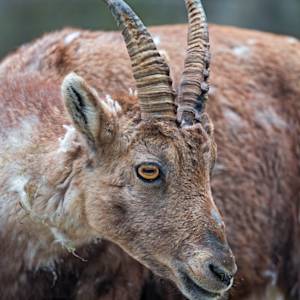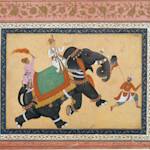Chinese pangolin
2023 CE • China
"The Chinese Pangolin is found across southern China – including Hong Kong and the islands of Hainan and Taiwan – but its range also extends into parts of India, Nepal, Bangladesh, Bhutan, Myanmar, Laos, Thailand and Vietnam. This species is found in a wide range of habitats, including primary and secondary tropical forests; limestone, bamboo, broadleaf and coniferous forests; as well as grasslands and agricultural fields . . . Pangolins are believed to be the most trafficked mammal on the planet. Snares or trained detection dogs are used to catch pangolins, primarily for international trade of live animals, skins, and scales to China and Vietnam, where their scales are used for traditional medicines and the meat prized as a delicacy in restaurants. Secondary threats include habitat loss and local exploitation for meat and other uses. The Chinese Pangolin is difficult to observe in the wild, and quantitative data on species populations are sparse. In China, it is estimated that up to 160,000 were harvested annually in the 1960s, leading to a population decline of up to 94% by 2003, when between 50,000 and 100,000 were thought to exist in the country. This drastic decline is thought to have occurred throughout almost the entirety of the Chinese Pangolin’s range. Only Hong Kong, Taiwan, and possibly Bhutan now hold populations that are not thought to be threatened by overexploitation . . . The Chinese Pangolin is one of three pangolin species classified as Critically Endangered, and at the time of their latest assessment in 2019, the IUCN predicted that the population will decline by more than 80% over the next three generations (up to 2040)."
"Chinese pangolin," World Land Trust.
Image: U.S. Fish and Wildlife Service Headquarters, CC BY 2.0, via Wikimedia Commons


Learn about Maya Lin’s fifth and final memorial: a multi-platform science based artwork that presents an ecological history of our world - past, present, and future.

Discover ecological histories and stories of former abundance, loss, and recovery on the map of memory.

Learn how we can reduce our emissions and protect and restore species and habitats – around the world.

See how art can help us rethink the problems we face, and give us hope that each one of us can make a difference.

Help make a global memorial something personal and close to home. Share your stories of the natural world.


